Alberto Giacometti: Sculptor of Unbearable Lightness
Giacometti was one of the most influential sculptors of the postwar era, renowned for his thin, spindly sculptures of humanity.
In a famous photo taken by Henri Cartier-Bresson in 1961, Alberto Giacometti physically reflects his Walking Man as the sculptor was either setting up or dismantling his exhibition at the Galerie Maeght in Paris.
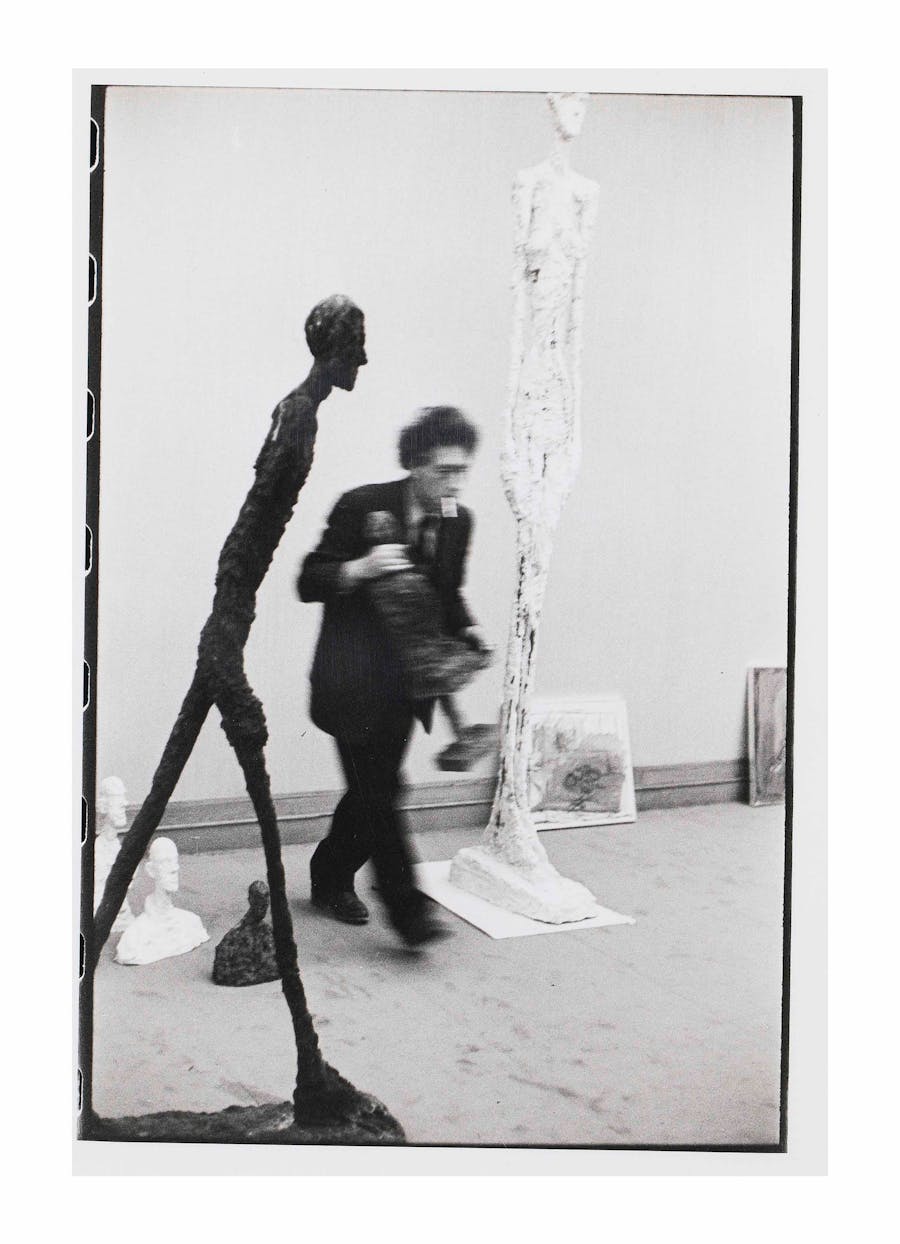
The Man is in the foreground, the man in the background. A shallow depth of field, along with the sculptor’s movement, bring a grainy finish to the image of the two captured in parallel poses, bent slightly forward. Both figures seemingly in step, imbued with characteristics of Surrealism and Primitivism, striding towards the unknown. A representation of starting over, a symbol of hope or renewal seen in the contrast of light bouncing off black iron.

Born in 1901 in the Swiss canton of Grisons, Alberto Giacometti, the eldest of four children, leaned towards an artistic career early on. Adopting the Post-Impressionist style of his father, a painter by profession, he executed his family portraits at home before enrolling at the Fine Arts School of Geneva. After his studies, at the age of 21 he moved to Paris, the hive of creative activity at the time. He frequented the studio of sculptor Antoine Bourdelle in the Montparnasse district, where he was exposed to Cubism as well as the African statues that influenced many Cubists. These would inspire his first creations, shown at the Salon des Tuileries from 1927 onwards.
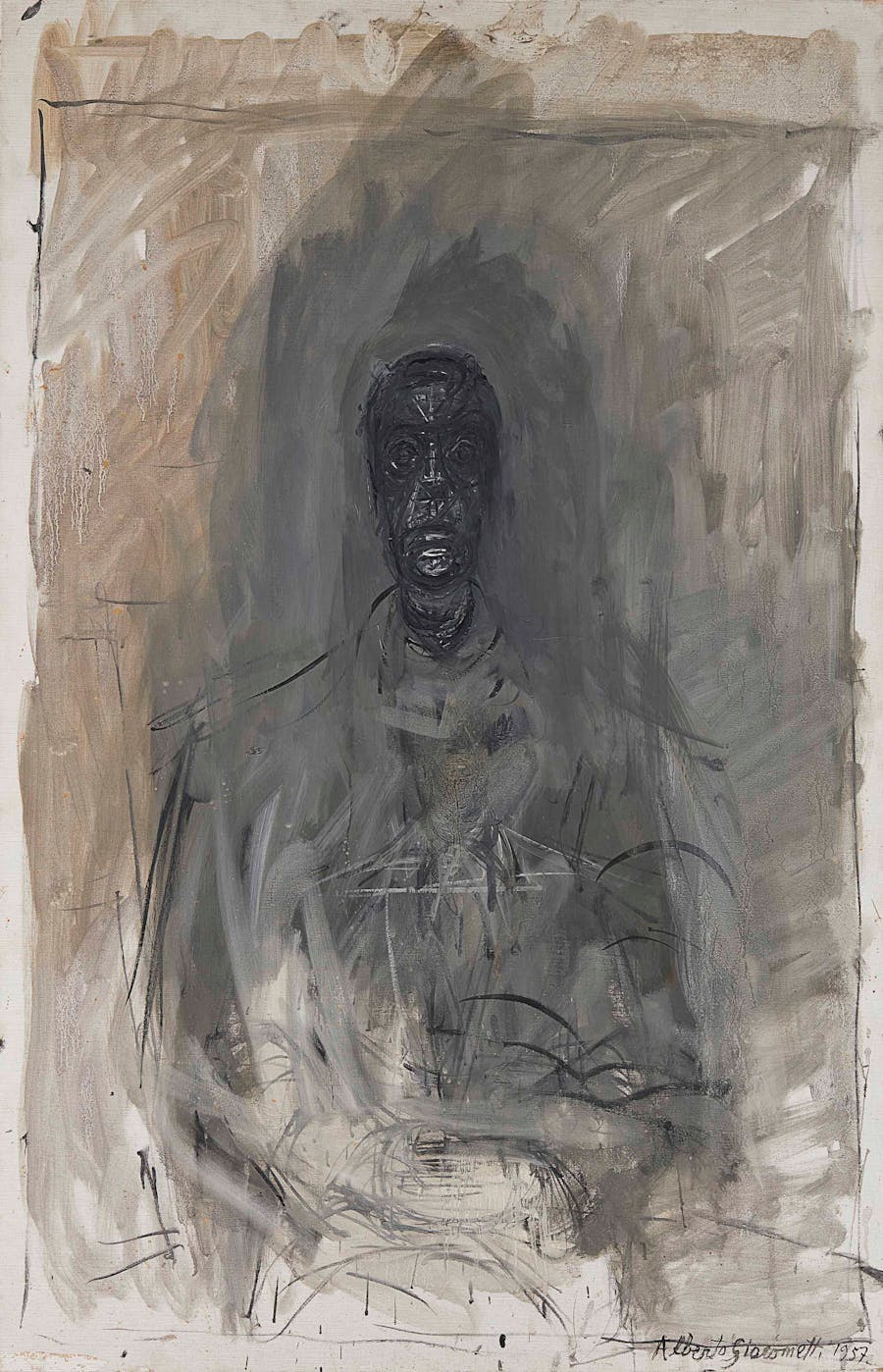
It was the Surrealists, however, who majorly informed Giacometti’s style. In his studio on Rue Hippolyte-Maindron he developed his craft, defining a style marked by doubt, anxiety, and reverie in response to the world’s violence. He officially adhered to André Breton’s Parisian Surrealist group in 1931, brushing shoulders with the likes of Joan Miró, Jean Arp, Michel Leiris, Salvador Dalí, and Tristan Tzara. He also flirted with Symbolism and started addressing issues of scale through the production of miniature spindly works that foreshadowed his iconic Walking Man, whose first version came into being at the end of the 1940s.
Read also: The Ten Most Valuable Sculptures Sold at Auction

There are in fact three versions of the Walking Man, differing in size and degree of inclination. The first two were cast in bronze, respectively in ten and nine copies, and are now shown in American and European museums or else held in private collections. Walking Man III, on the other hand, was never cast. One Walking Man I went under the hammer at Sotheby’s London in 2010 for $103 million before this record was shattered in 2015 by the sale of Man Pointing at Christie’s New York, for over $141 million.
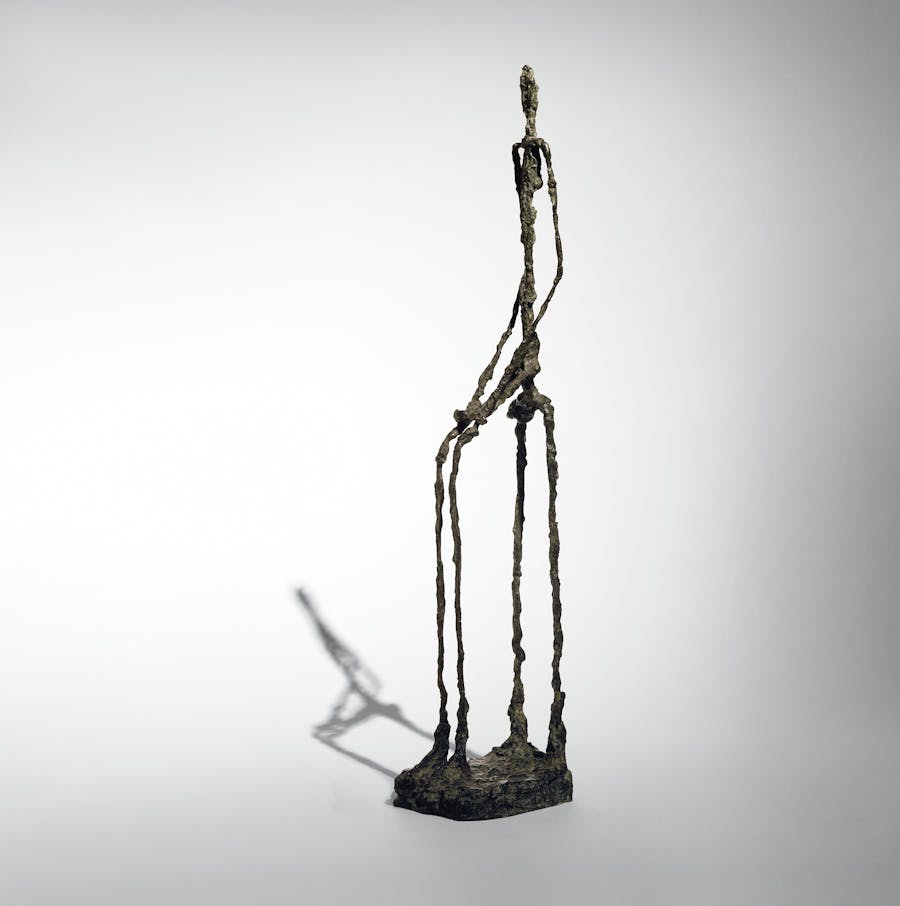
Giacometti was excluded from the surrealists in 1935, although he would never renounce his artistic friendships or deny their influence on his body of work. Around this time he began making a series of heads, usually using his brother as a model. In 1941, he left war-struck Paris for Geneva, where he continued his work on miniatures while also nurturing the desire to create a monumental work. This would turn out to be Woman with Chariot, a portrait of an English friend done from memory and abstracted to the point of anonymity. This piece announced the artist’s experimentation depicting figures in space, with bodies that were ‘caged’, raised off the ground, or seemingly levitating, a period that began immediately after the war and lasted until his death in 1966.
See also: Amedeo Modigliani: A Short Life But Magnificent Career
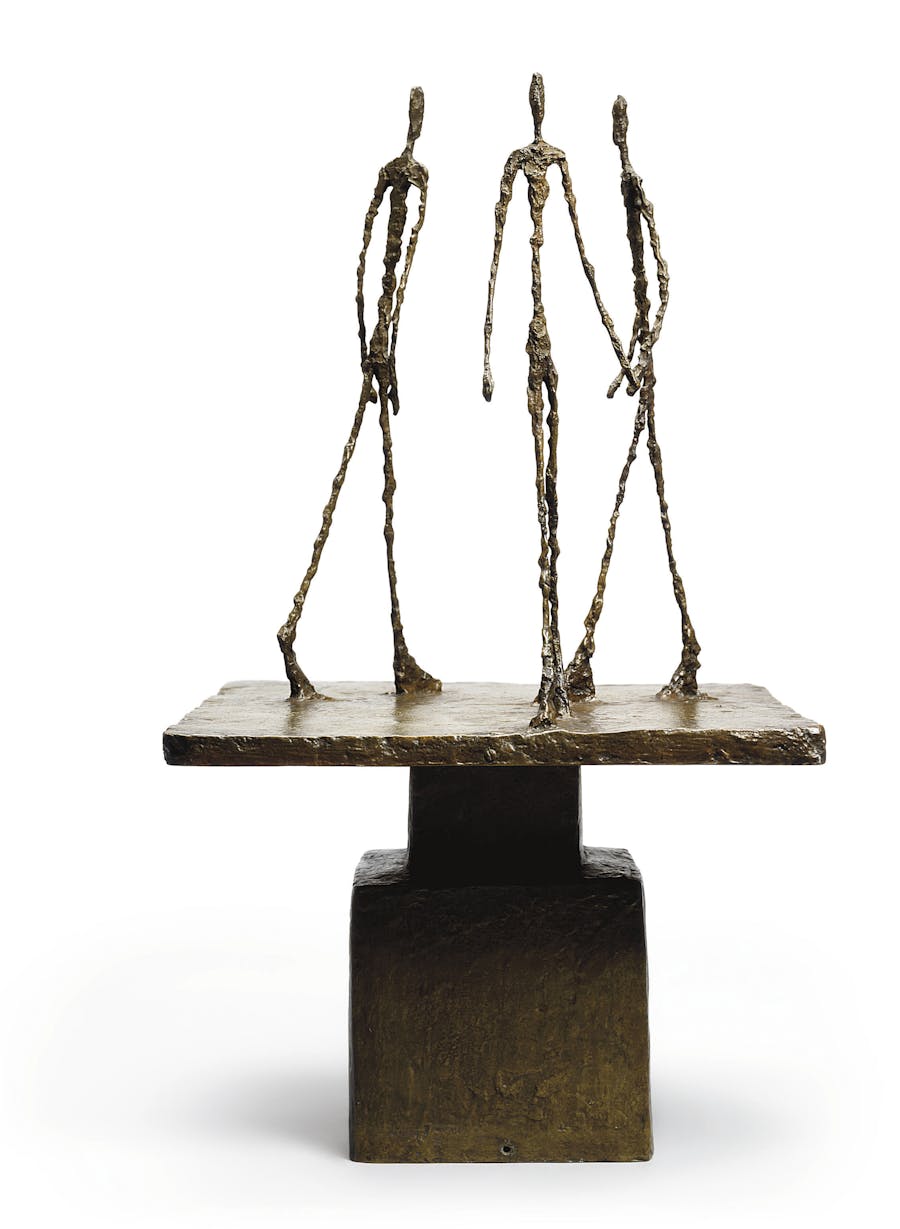
Giacometti returned to Paris in 1945, where he married the Red Cross worker Annette Arm, who would become a frequent model. He declined André Breton’s offer to re-establish ties with the surrealist movement, preferring to assert his own style. This style was winning him fans, including the art dealer (and son of the famous painter) Pierre Matisse, who increased Giacometti’s renown in the United States by showing his works in his New York gallery. Thanks to Matisse, the sculptor was able to cast his creations in bronze again, and began producing several major works for exhibitions in America in 1948 and 1950.
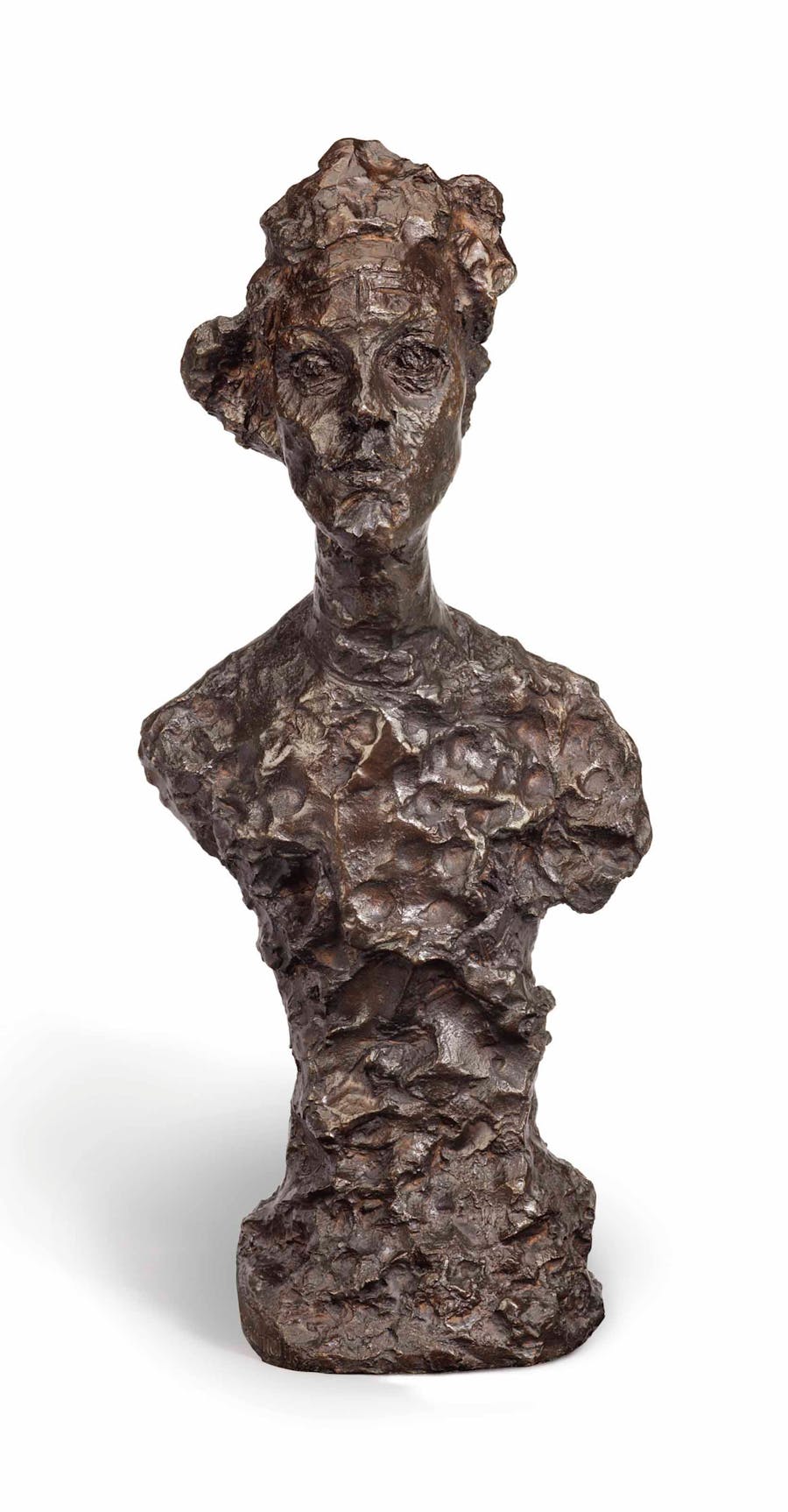
In 1951, the Galerie Maeght, a gallery dear to the surrealists, hosted Giacometti’s first solo exhibition in France since the war. It met with great success, and the artist returned to present his work several times over the next decade, acclaimed by the writers Jean-Paul Sartre, Michel Leiris and Francis Ponge. Giacometti represented France at the Venice Biennale in 1956 with a series of female figures that marked the culmination of his research into representation and movement. In 1962, he received the Carnegie Award as well as the Venice Biennale’s grand prize for sculpture, and in 1964 he was honored with the Guggenheim award.
See also: Lucio Fontana: The Man Behind the Cut
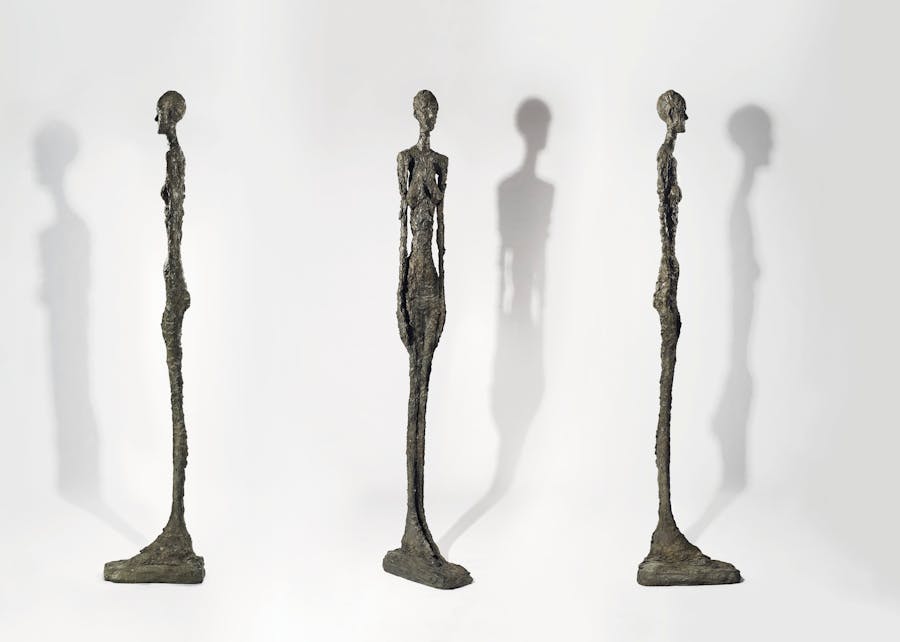
When he died, leaving no descendants, Alberto Giacometti was a fulfilled artist. Today, he is still respected all over the world as one of the greatest twentieth-century sculptors, and his drawings, paintings, and prints similarly demonstrate his sensitivity, humanity and extraordinary exploration of form. His wife, until her death in 1993, would strive to develop the Fondation Giacometti in France, for which Alberto laid down the groundwork in Switzerland in the early 1960s. At the foundation's initiative, the Giacometti Institute opened in 2018 in the Montparnasse district near the artist’s former studio. Giacometti is buried in his natal village of Borgonovo, but all over the world his Men continue to walk.


